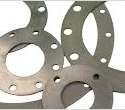As the world accelerates its transition to renewable energy, innovative materials play a pivotal role in enhancing the efficiency and reliability of sustainable technologies. Among these materials, rubber is a versatile and indispensable component in electricity generation from renewable sources like wind and solar power. Keep reading to learn more about the relationship between electricity… Read more »
The Role of Rubber in Renewable Energy: Innovations in Wind and Solar Power










